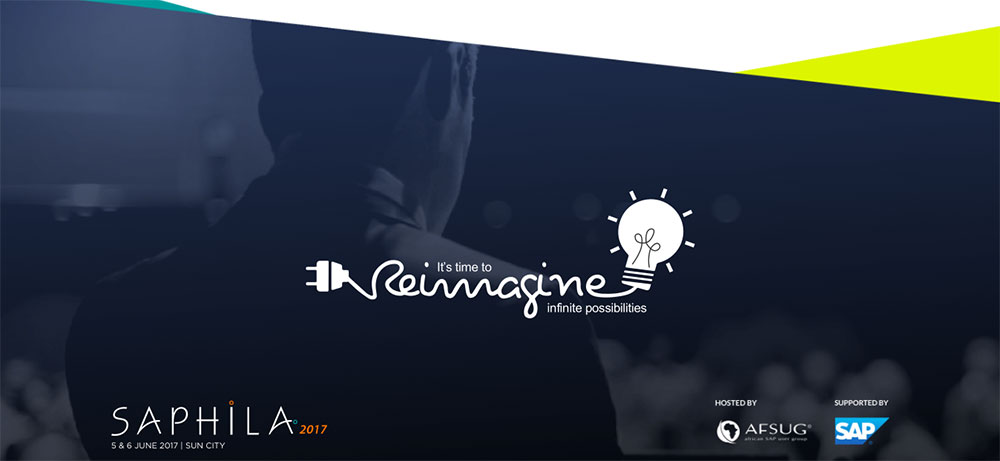“There are new forces at play in the old world that we know so well. We are at the beginning of a revolution and are beginning to perceive the true potential of tomorrow’s world.” You could be forgiven for thinking that you were reading the opening of a science fiction novel, but in actual fact, these words formed part of the opening of Saphila 2017, the African SAP User Group’s (AFSUG) biennial conference for SAP users, which takes place at Sun City between 5 and 6 June 2017.
The theme of this year’s Saphila conference is the invitation to ‘Reimagine infinite possibilities’. This message was brought home in fascinating detail by opening speaker Tom Raftery, Vice President of SAP and a self-styled ‘Futurist & Global Internet of things Evangelist’, who gave a presentation on ‘10 predictions of what digital will deliver by 2027’. Raftery opened his peek into the future by taking us briefly back 10 years, reminding us that in 2007, Facebook and Twitter had just started, the world had not yet been introduced to WhatsApp, Snapchat and Kindle and there were no smart phones.
Raftery says, “In 2007, Steve Jobs launched the first iPhone, which had 16 GB of memory and no 3G. Today, an AI-equipped Apple Watch can detect the signs of a stroke with 97% accuracy. This is the context we are talking about regarding the level of change in the world of technology. And so let’s see what the world might look like in 10 years from now.”
Raftery’s first point is to note changes in manufacturing so that products will be sold as a service. “I see manufacturers selling the service of the device. For example, Kaiser Air Compressors have presented a different business model in which they give the customer their compressors and charge them per cubic metre of the air that the compressor produces.”
Raftery also predicts real transformation in the energy industry, particularly around renewable energy. “Solar is taking off. The price of batteries is coming down and the energy density is increasing. This means that batteries are holding more energy and becoming cheaper to buy. An increase in wind and solar energy will allow you to reduce the carbon footprint of energy generation. In addition, the demand for Tesla’s electric vehicles is increasing all the time and there I foresee a situation whereby, because these vehicles are always on and connected, they will be able to be used to sell energy in the fullness of time, as electricity generation is essentially becoming free.”
Raftery foresees changes in the transportation sphere. “Cars will have predictive maintenance and will become a lot safer, including driverless vehicles. This will have implications on insurance models and ultimately could see a reduction in pollution and congestion, as cars will drive you to your destination and then drive off. Further, we are also going to see the advent of flying motor cars – Uber plans to test an on-demand flying cars network by 2020 and Airbus and Toyota are also working on a prototype, as is German start-up Lilium, which has created a flying machine that can take off and land vertically like a helicopter, but then once in the air flies in forward motion like an aeroplane.”
Agriculture will change, says Raftery. “We will have to feed nine billion people on this planet in just a few years’ time. There will be a need to change how we produce food. I see the advent of vertical, indoor hydroponic farming, which will use 95% less water, and also far less fertiliser as well as pesticides. Vertical farming can occur in the middle of cities – what about re-using all those multi-storey car parks that will be phased out due to the rise of driverless vehicles? We could return the farms to biodiversity, for example growing forests or reintroducing territory for wild game animals.”
Raftery sees changes in healthcare by 2027 as well. “What if your health data is sent to a network in the cloud, via a network app that has data constantly updated. A notification gets sent to the appointed doctor when there are warning signs, an appointment is made and when you arrive, the doctor has your data already. This is essentially preventative maintenance for people.” Further, he foresees new organs being grown from your own cells, the use of robots to assist with healthcare for seniors or those with special needs, and the use of virtual reality in medical training.
Raftery anticipates the rise of rise of business networks, including a health network as outlined above, and the rise of blockchain. He says, “Blockchain will do to the financial system what the rise of the Internet did to traditional print media.”
He also sees the ongoing rise of artificial intelligence (AI) but notes that, as with the beginning of the Industrial Revolution, this does not automatically mean job losses, but instead job creation as well and the creation of different industries.
He concludes, “With the rise of connectivity, terms like the ‘Internet of things’ and ‘digitisation’ will become redundant because everything WILL be connected. In the 1926 words of Nikola Tesla, a futurist thinker and physicist, inventor and engineer, ‘When wireless is perfectly applied, the whole earth will be converted into a huge brain, when in fact it is, all things being particles of a real and rhythmic whole.’ In conclusion, digital is taking off; it will change everything and the time to reimagine and move is now.”
Click below to share this article

